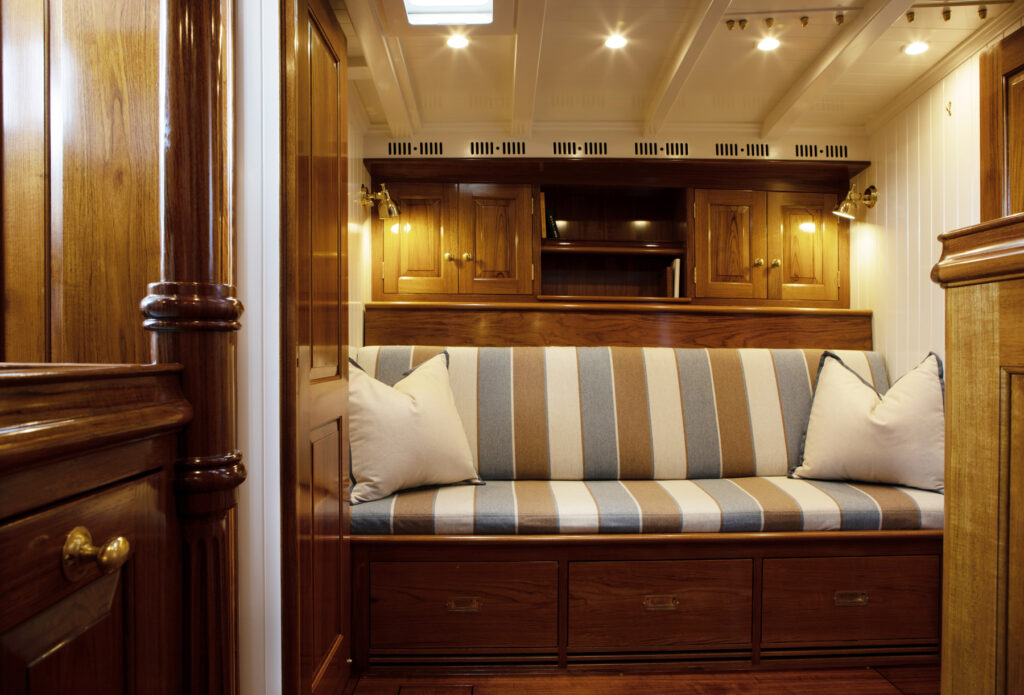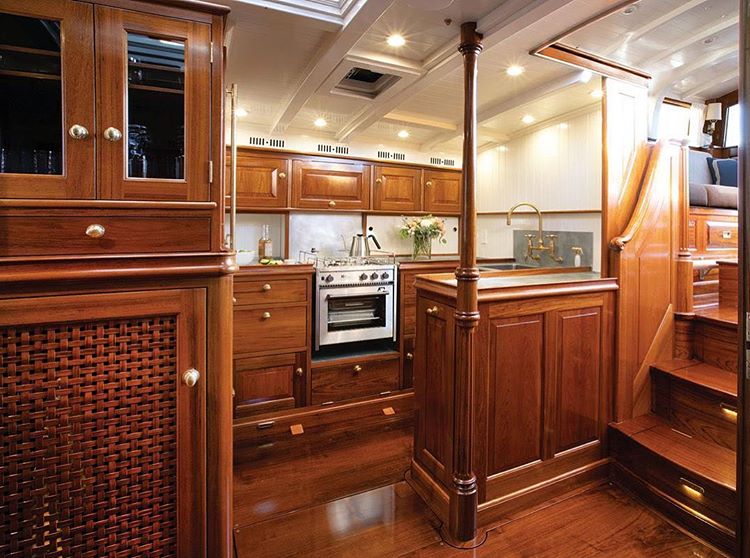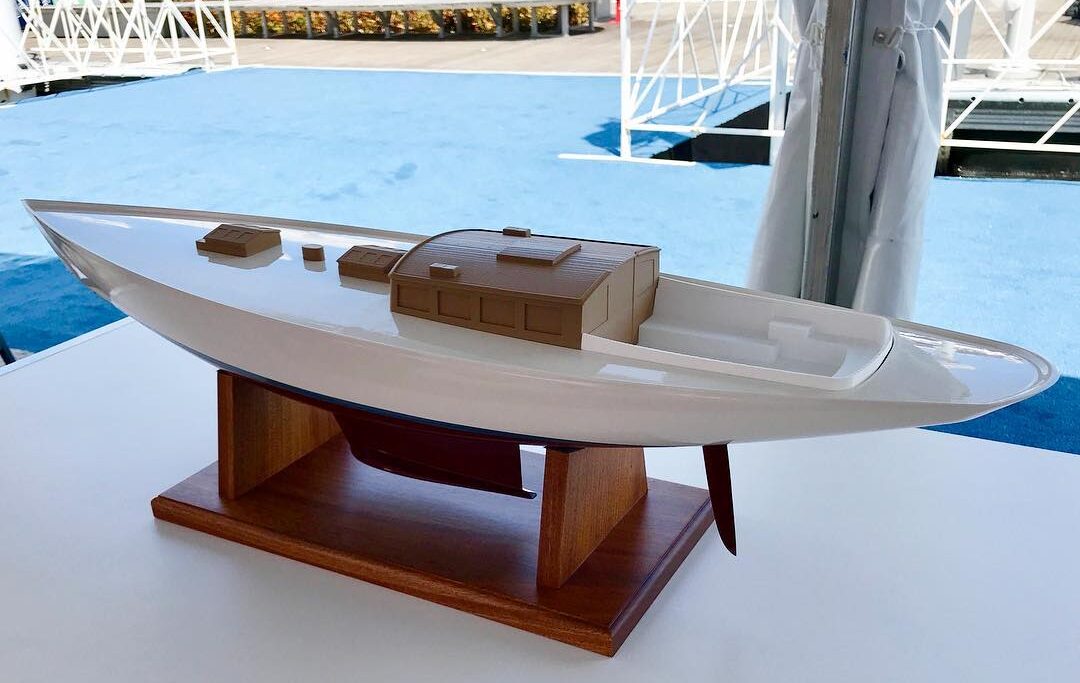Anna
Anna is a 65′ cold-molded day sailer designed by Stephens Waring Yacht Design that won the Spirit of Tradition Classic Boat Award in 2018 as well as a growing list of regattas. Anna has all styling and soul of a classic yacht with all the performance and equipment technology of a modern vessel; a relationship that is not easy to achieve in relatively small space. Anna marked many firsts for Lyman-Morse as their first cold-molded vessel as well as the first yacht project to be entirely modeled in Solidworks.
As the department manager and in-house design lead I leveraged Anna‘s design budget to fully implement my process improvement plan. With a meticulous owner, vast interior details, and limited equipment space it was imperative to model nearly every detail of this vessel to reduce design errors and schedule delays.
Modular Construction

To condense the build schedule and reduce man-hours Anna‘s interior was designed to be built in two major modules, port and starboard. While Stephens Waring Yacht Design did much of the heavy lifting, the Lyman-Morse design department re-modeled the entirety of the interior including cabinet drawer slides and even the v-groove paneling on the bulkheads. With a complete model we were able to inspect all potential structural interferences, trim work interactions, and mechanical systems runs before a single piece of wood was cut. This drastically reduced shop floor rework and allowed us to tailor every detail to our liking; so much so that the v-groove detail was intentionally laid out to have balanced reveals and the spacing was altered by 1/16″ cabin to cabin to ensure clean termination on trim or counter fiddles.
From an engineering standpoint, the complete model provided an accurate CG and weight to be able to design lifting tabs onto the CNC cut bulkheads and have a rough rigging plan prior to module completion. Both modules fit into the hull as expected, clearing all pre-installed mechanical systems by just fractions of an inch.
Interior Details

Anna‘s interior has many reoccurring details and design elements such as the fluted posts and post caps that proved most efficient to be produced on the CNC machine. The fluted post was most difficult due to being produced on a 3-axis machine and requiring precise indexing as the part was cut in multiple stages. The companionway railing combines a CNC carved handrail and post cap with a hand carved spiral termination detail. Both of these teak pieces required the design of fixtures to carve the top and bottom details with limited ability to hold or fasten into the finished part while machining.
Exterior Trim

The exterior of Anna is every bit as detailed as her interior with intricately shaped teak deck house trim that doubles as a handrail, ornate butterfly hatches and an unbroken cap rail that wraps the entire perimeter of the bulwark. Sharing the fixturing difficulty of the interior components, the exterior elements add model surfacing difficulties due to their compound and often diverging camber at corners. The models were provided to us in Rhino but required extensive surface repair or complete remodeling in Solidworks for the CAM software to resolve a tool-path.
3D Printed Model

With a complete solid model, producing a display model worked both as a good case study for the 3D printer as well as a marketing decoration for boat shows.
At the Helm After a Sea Trial

